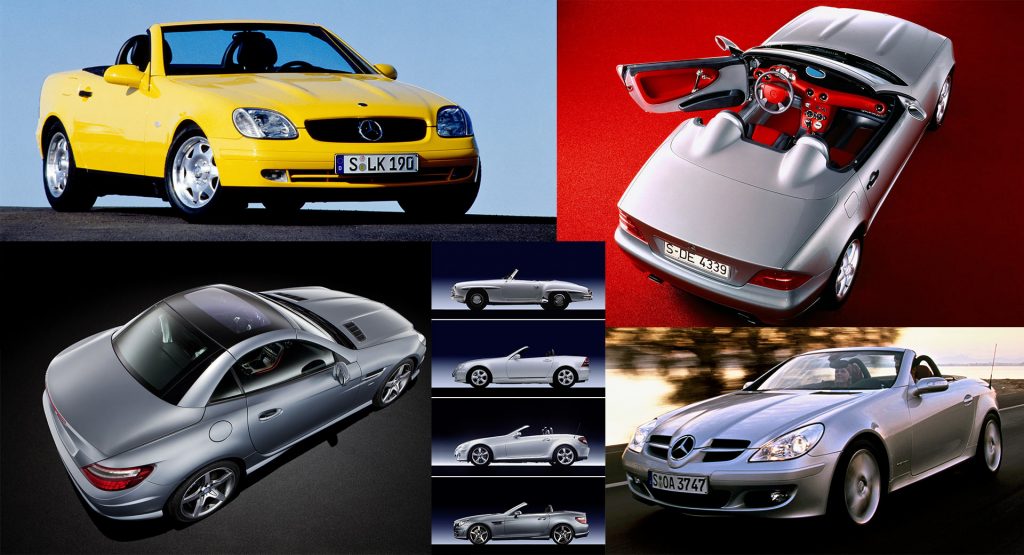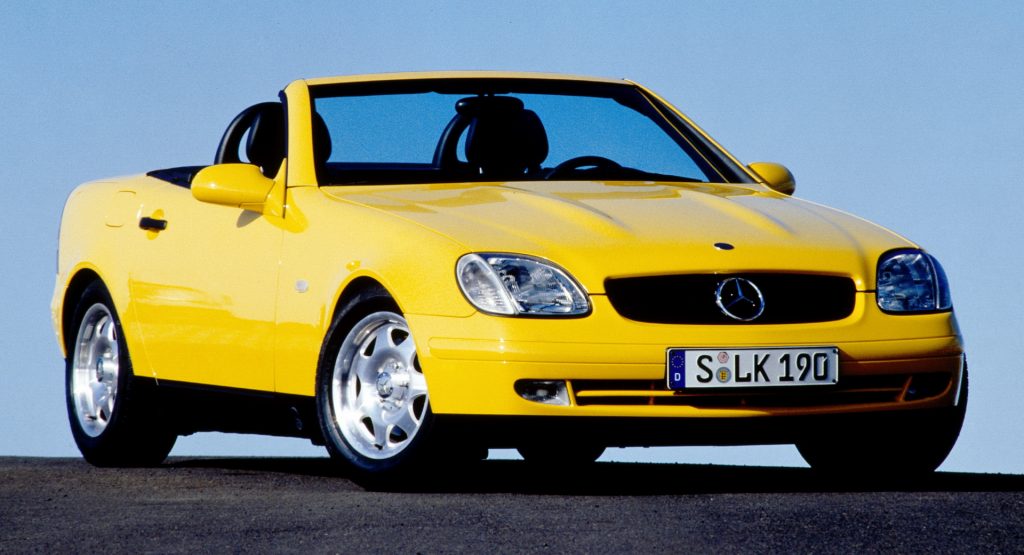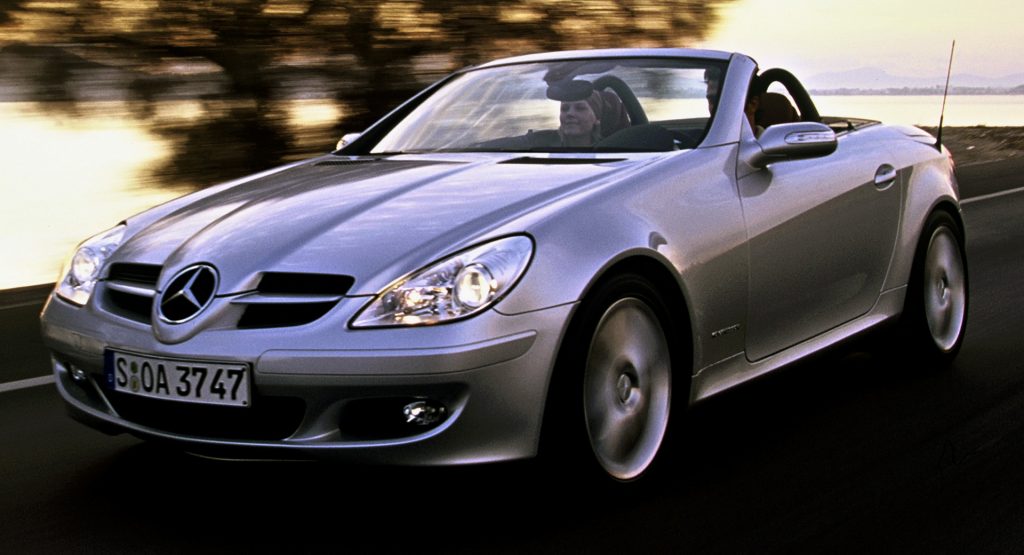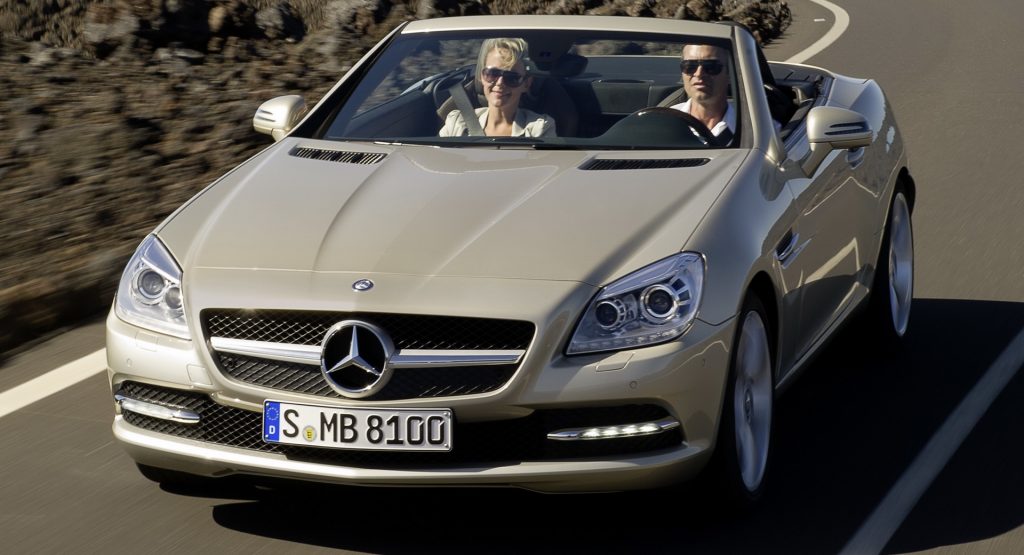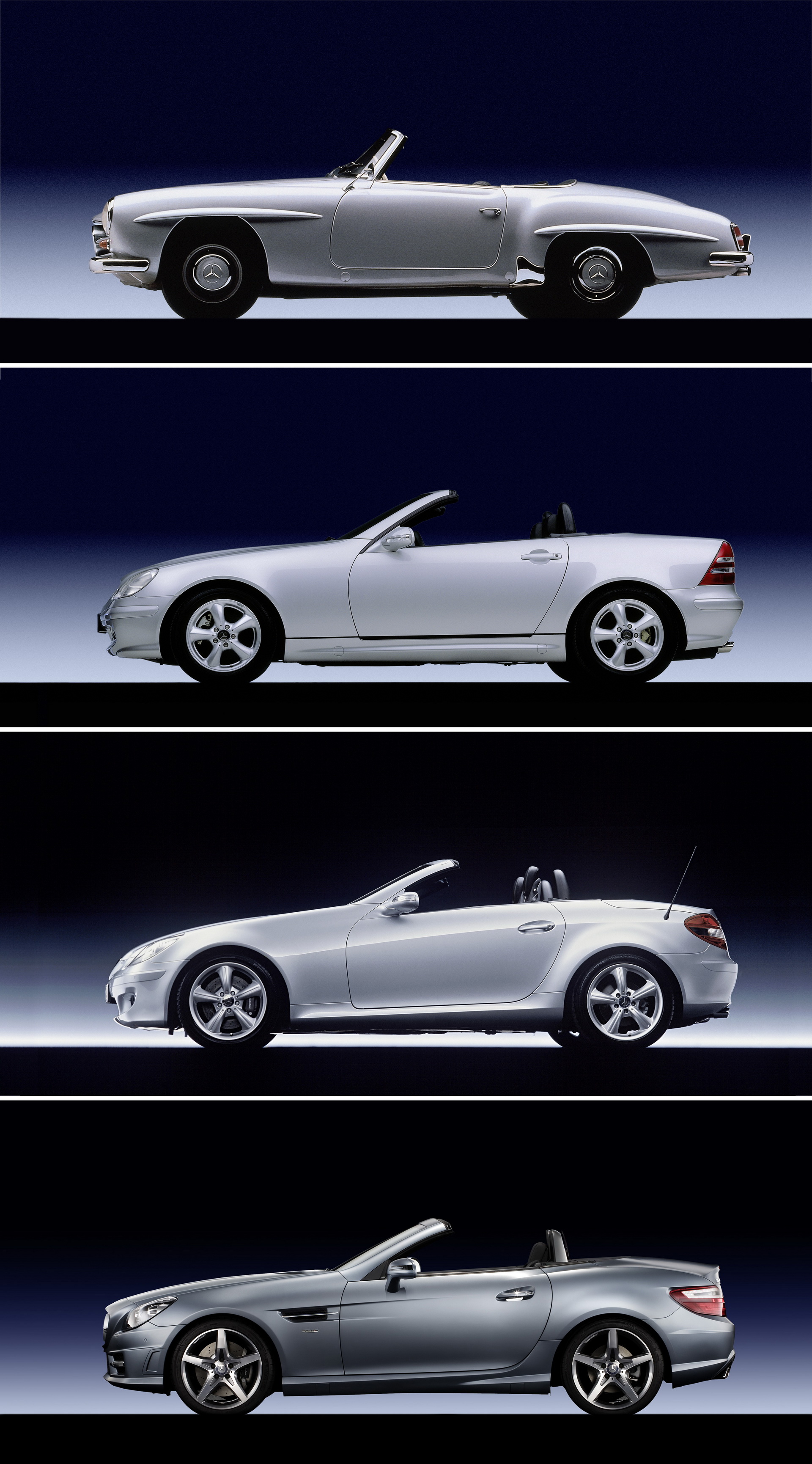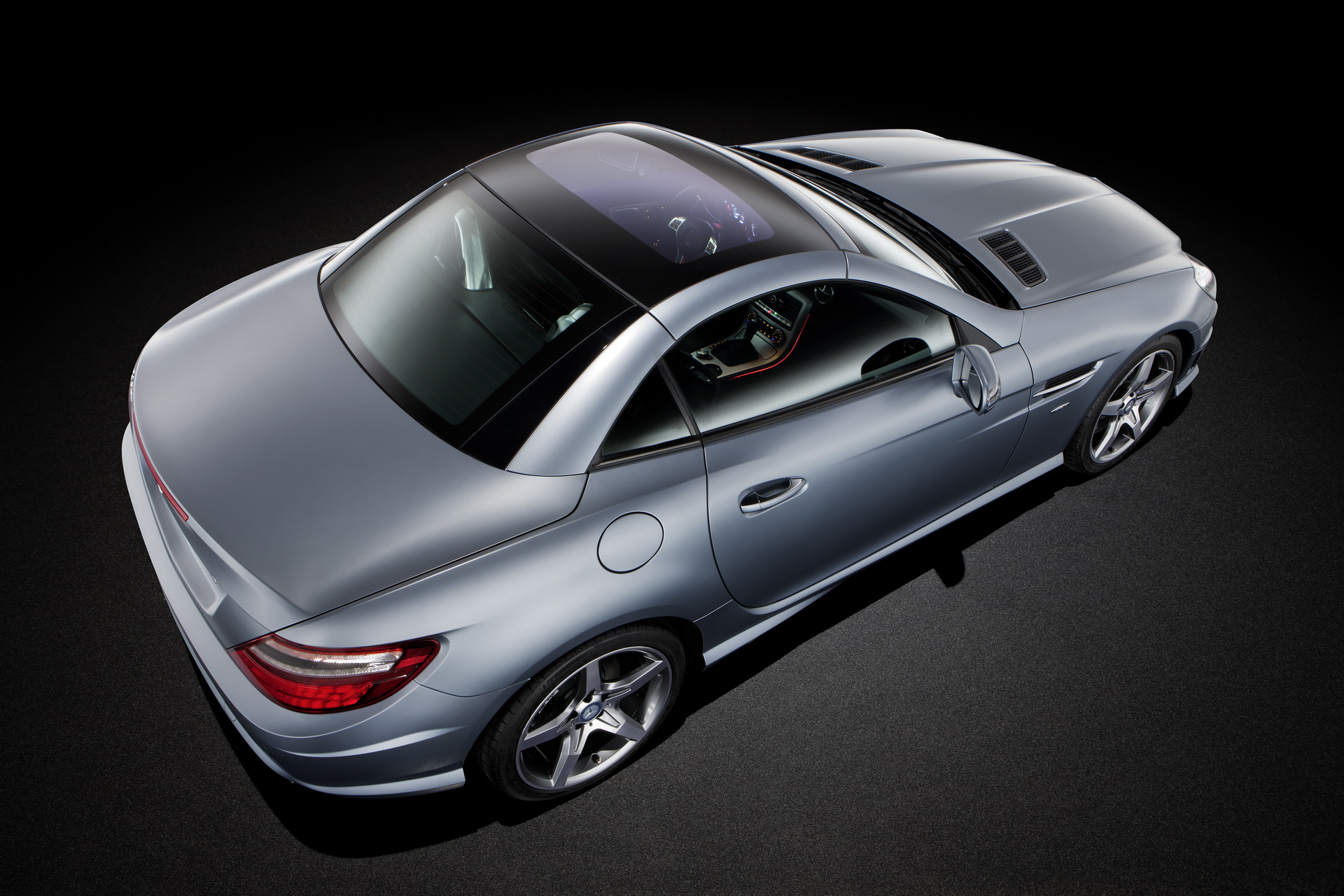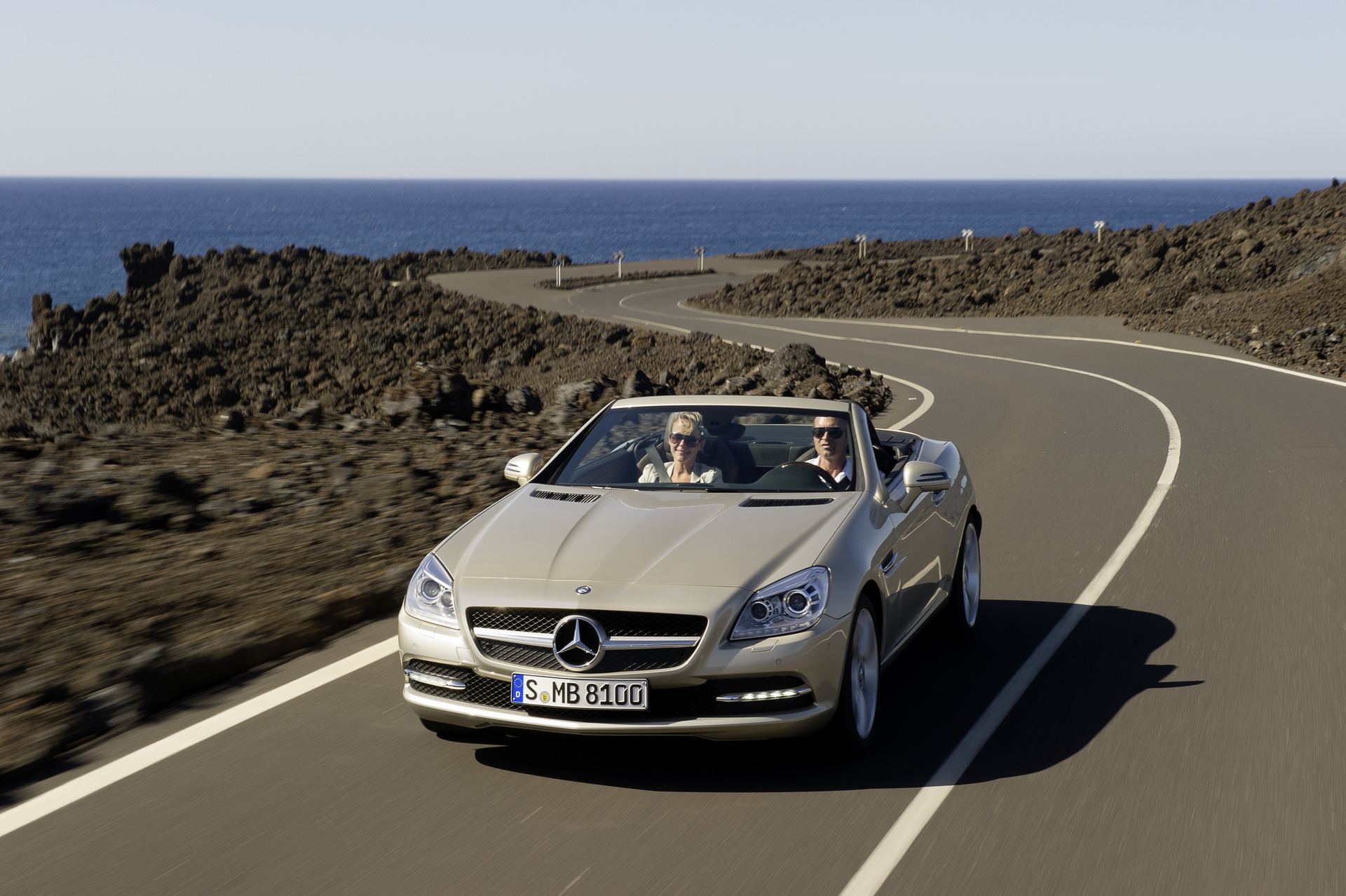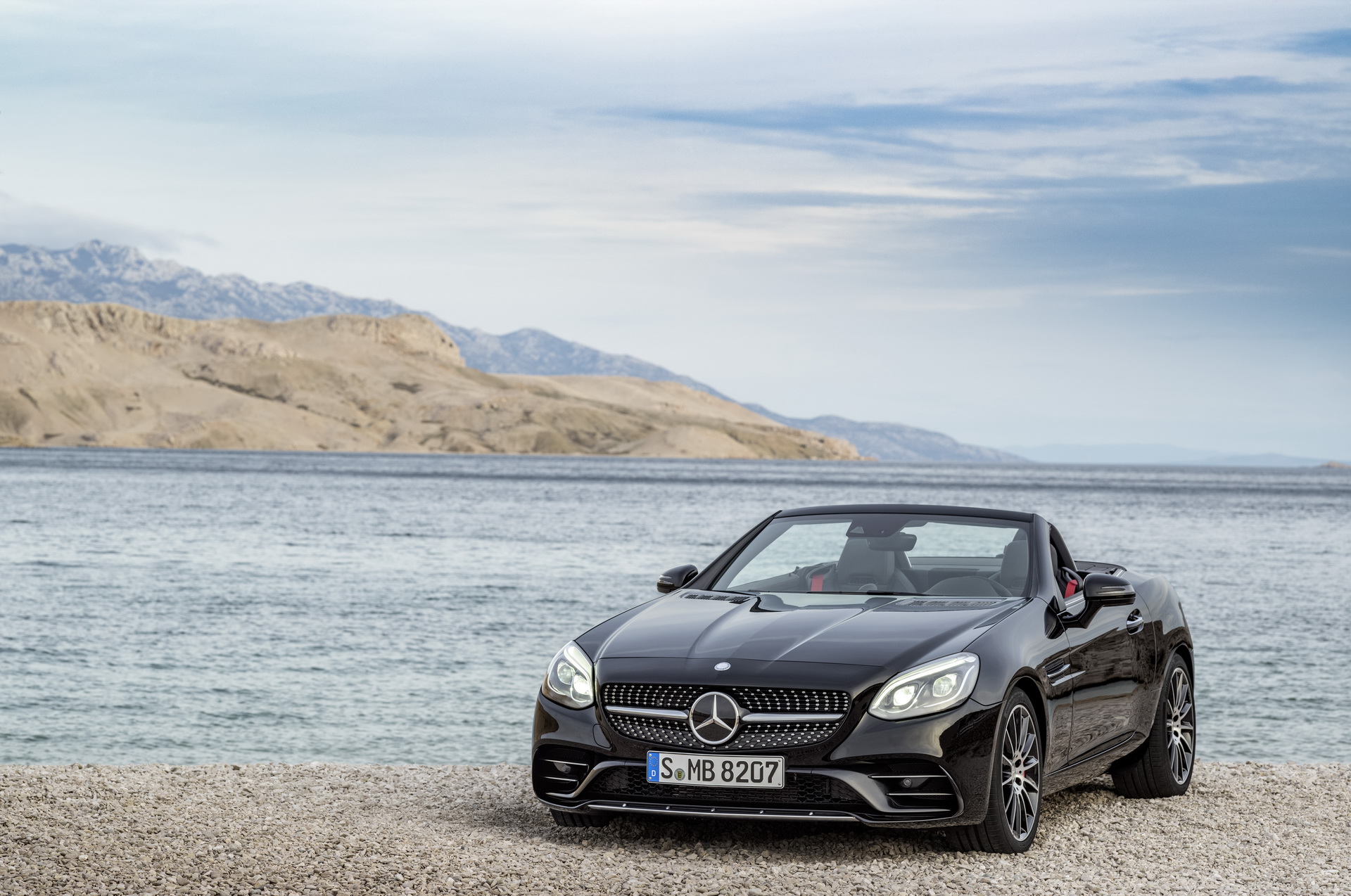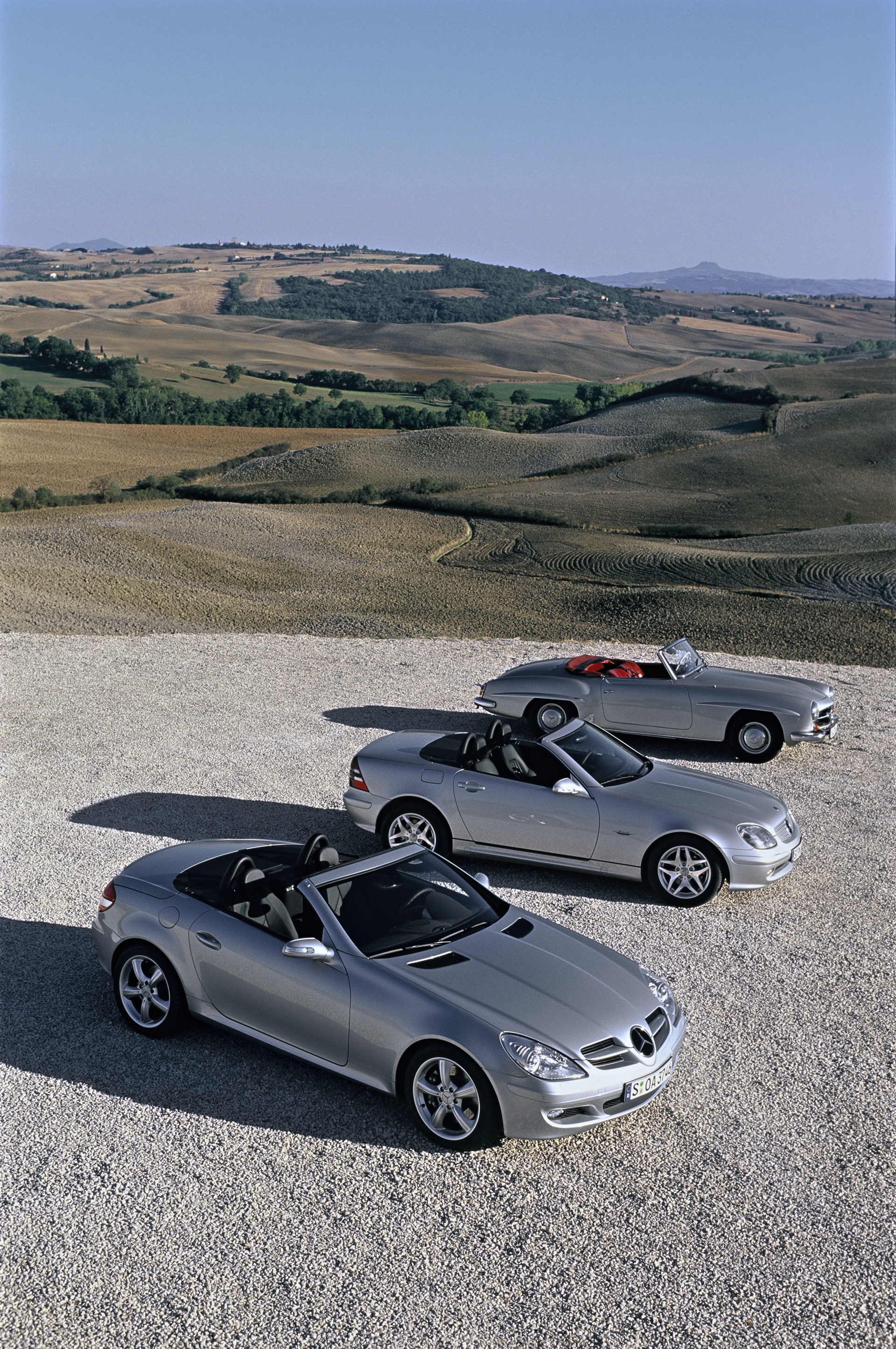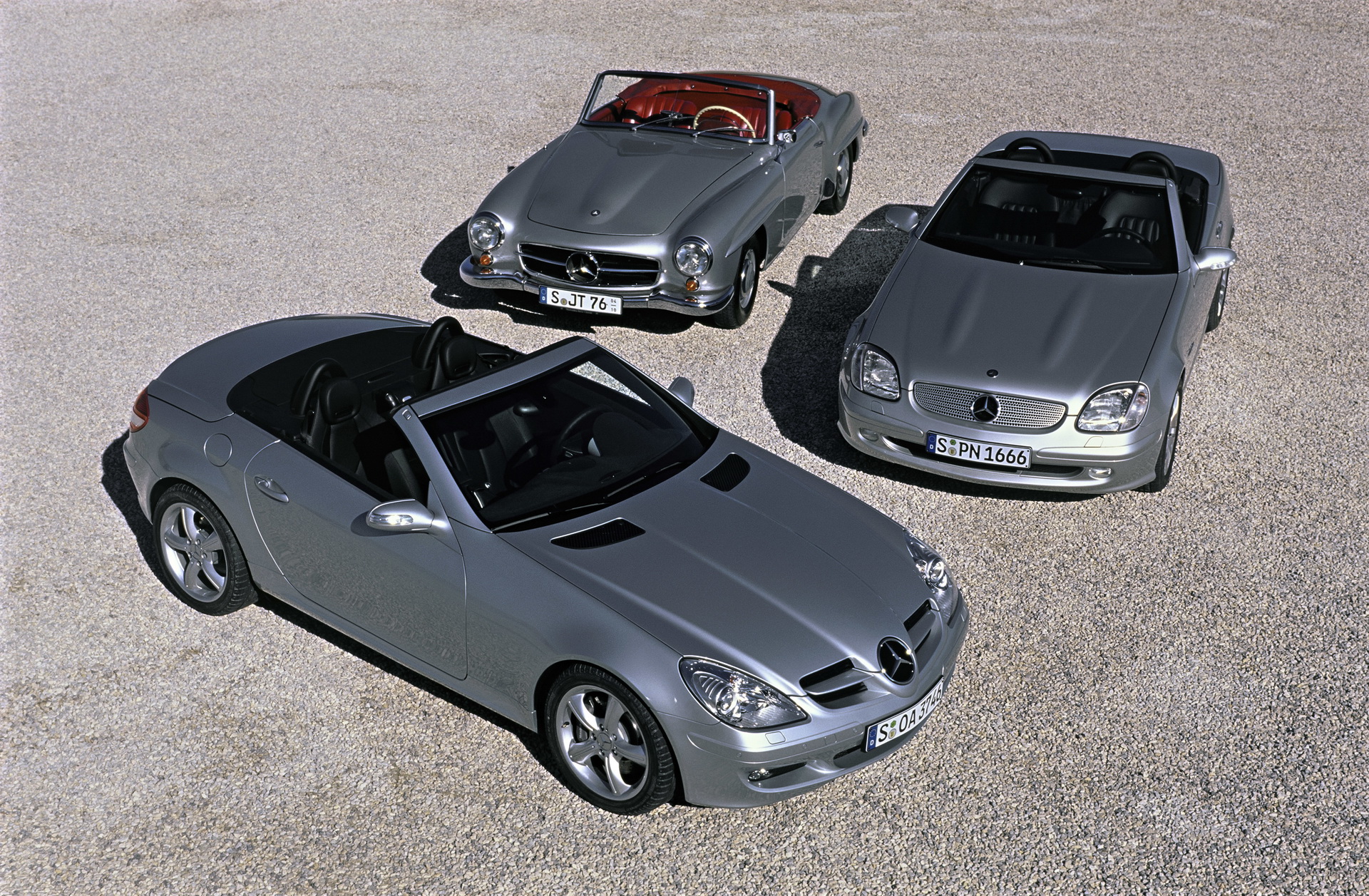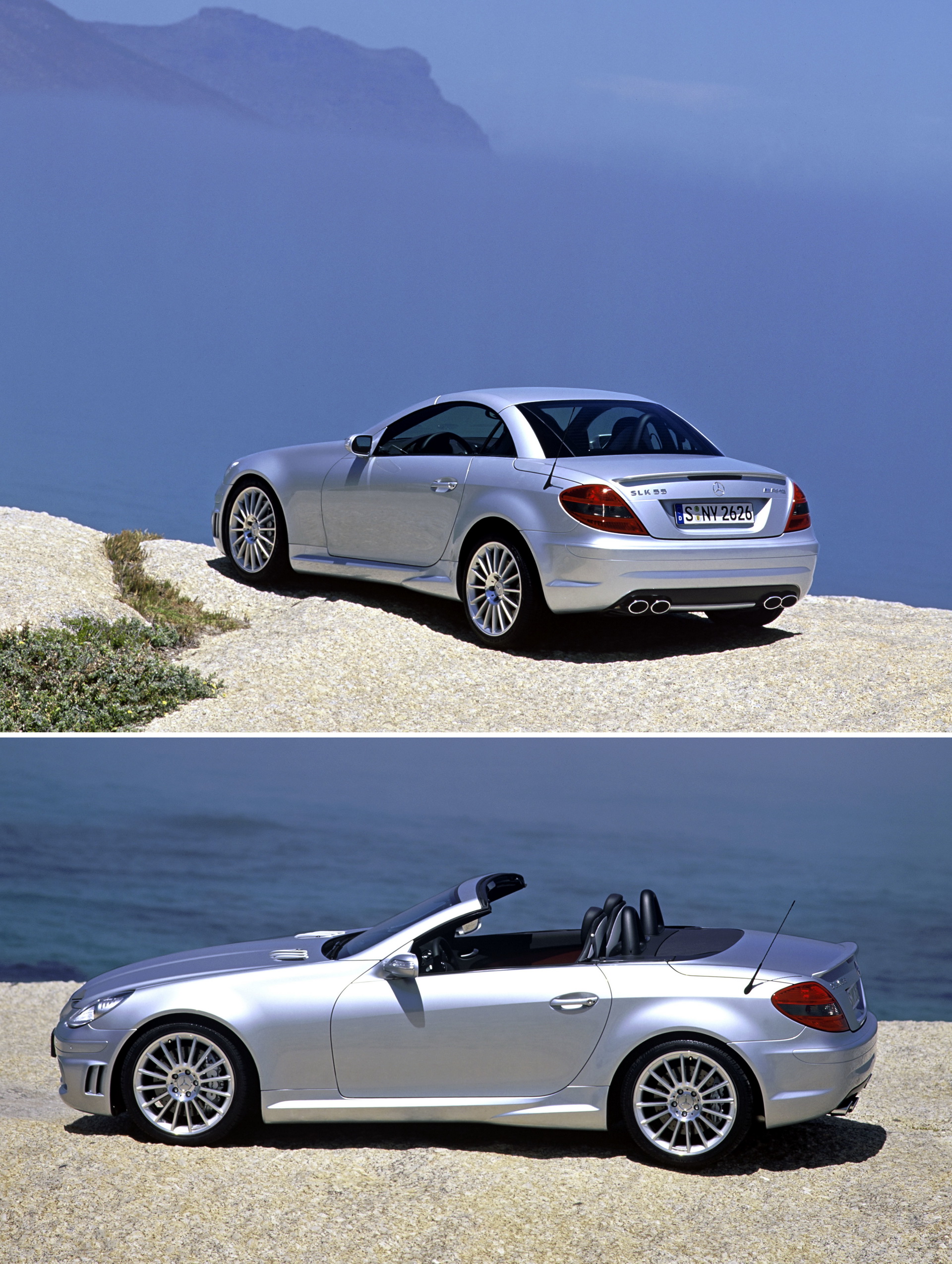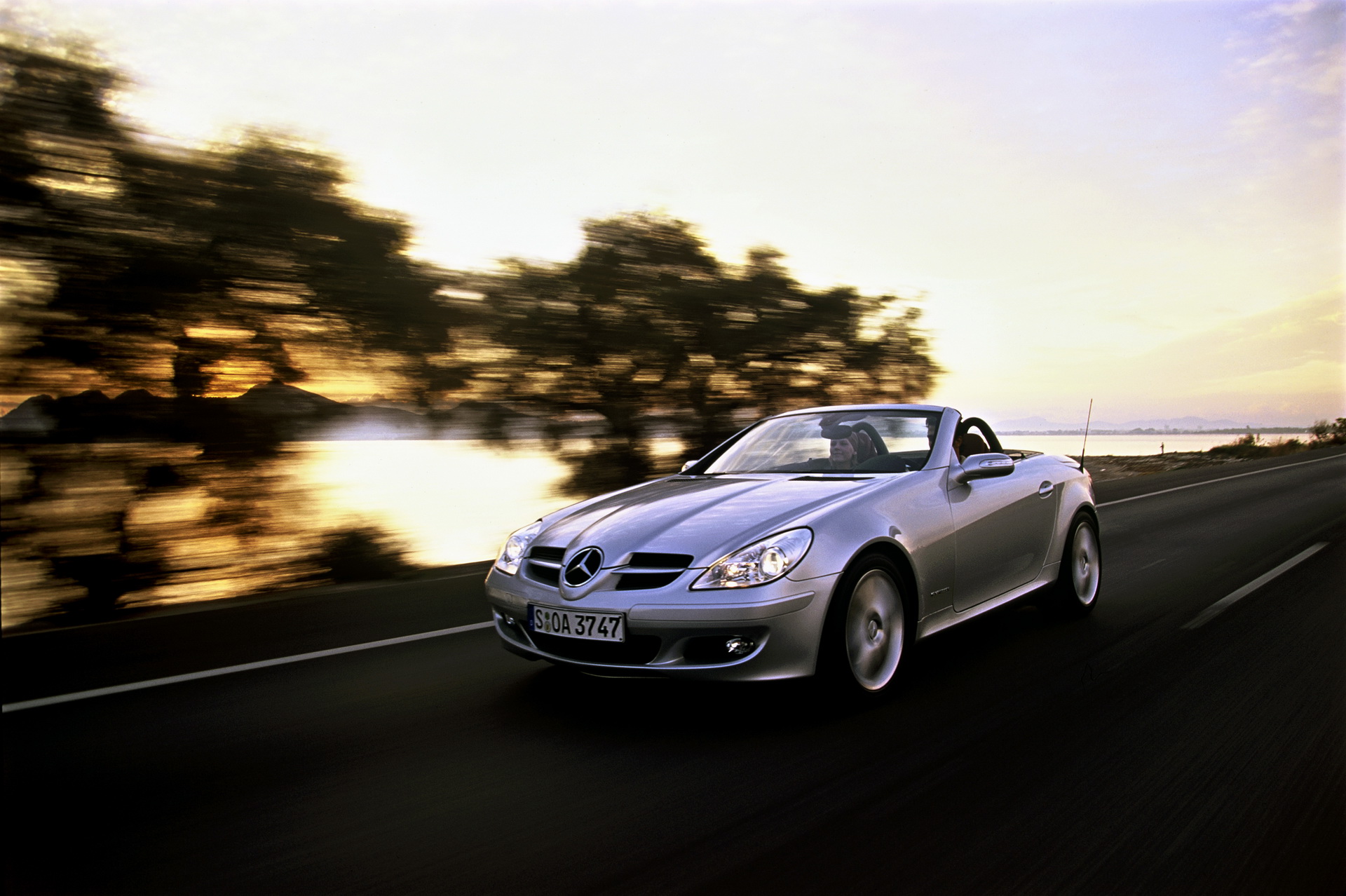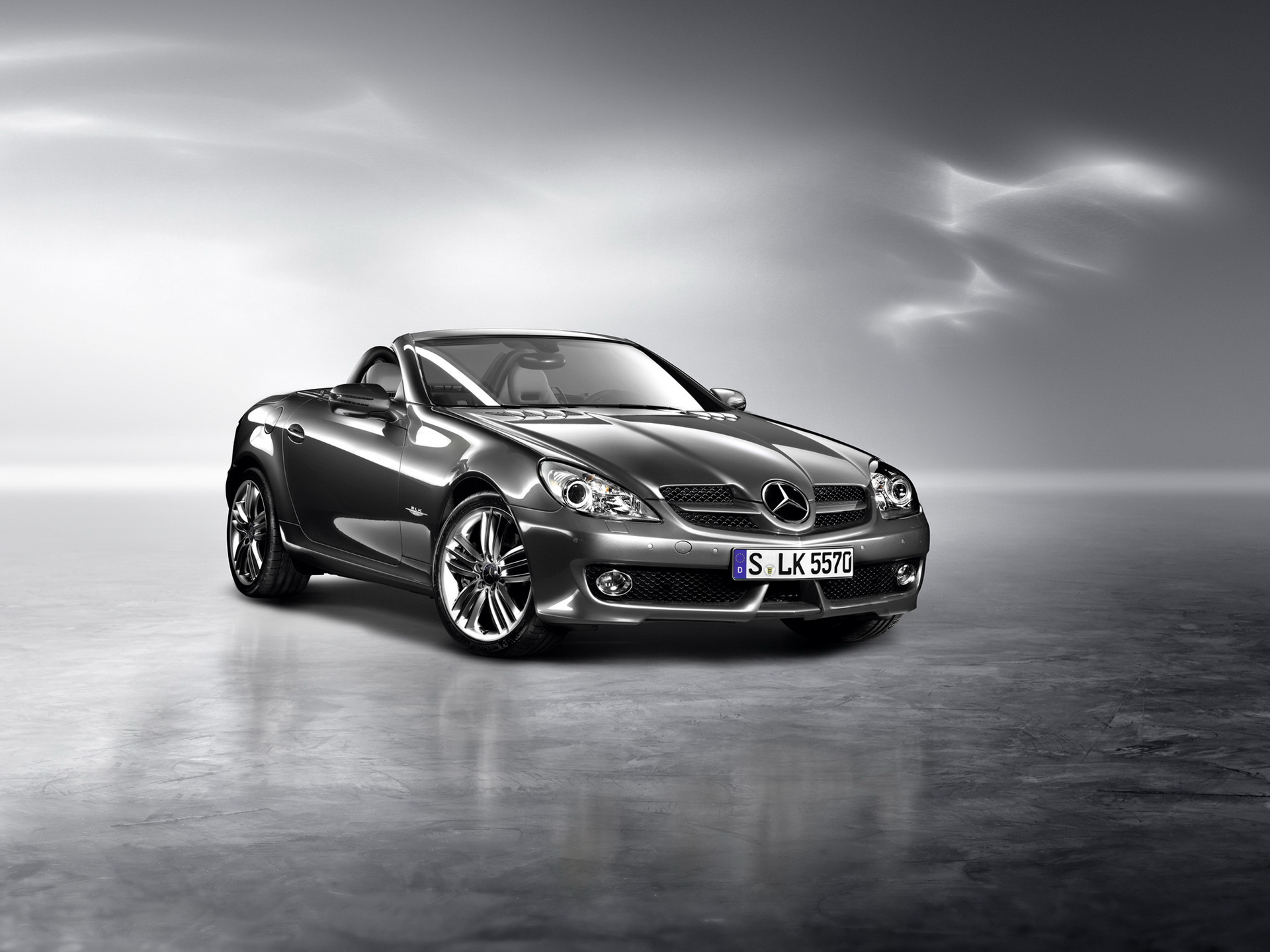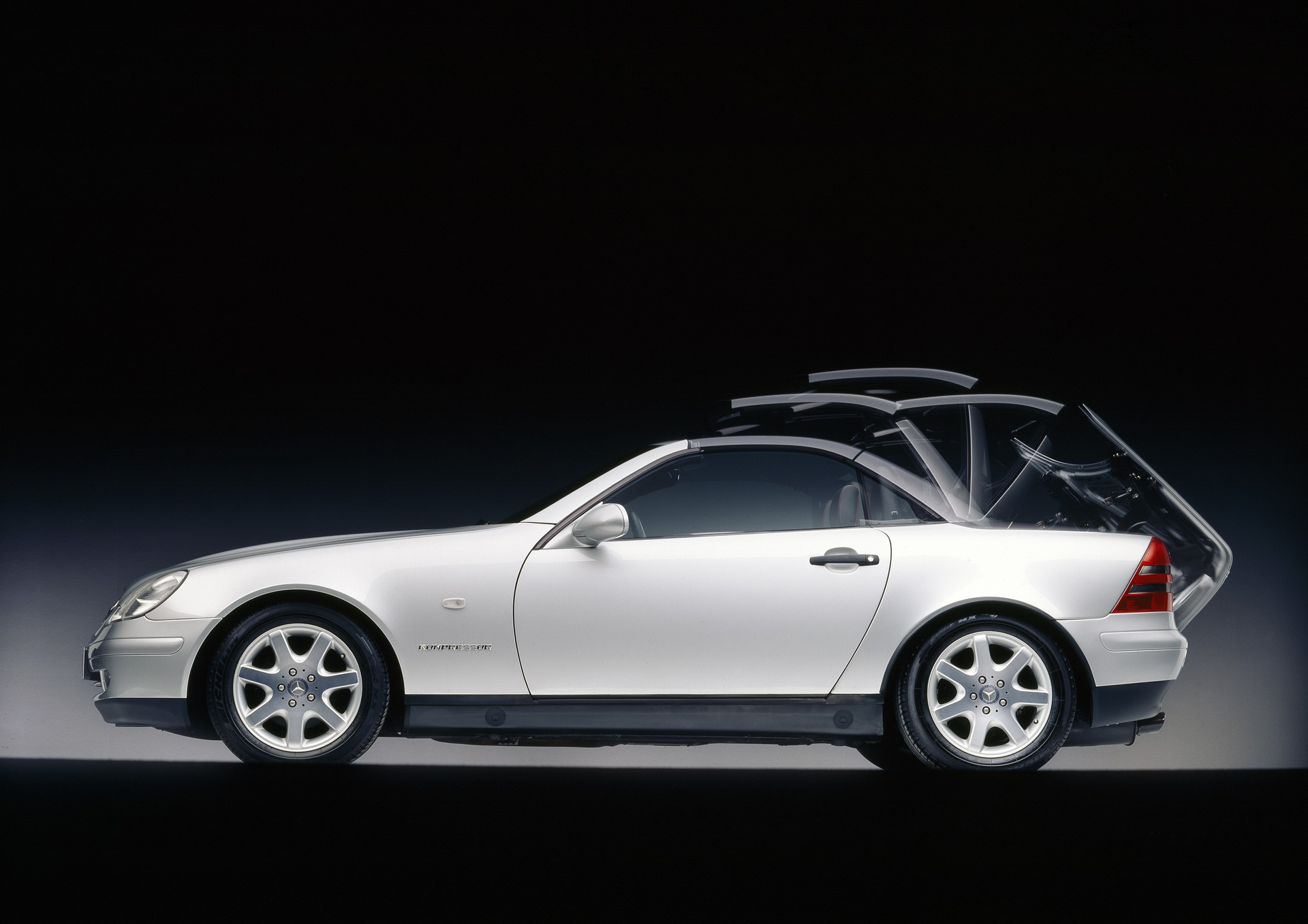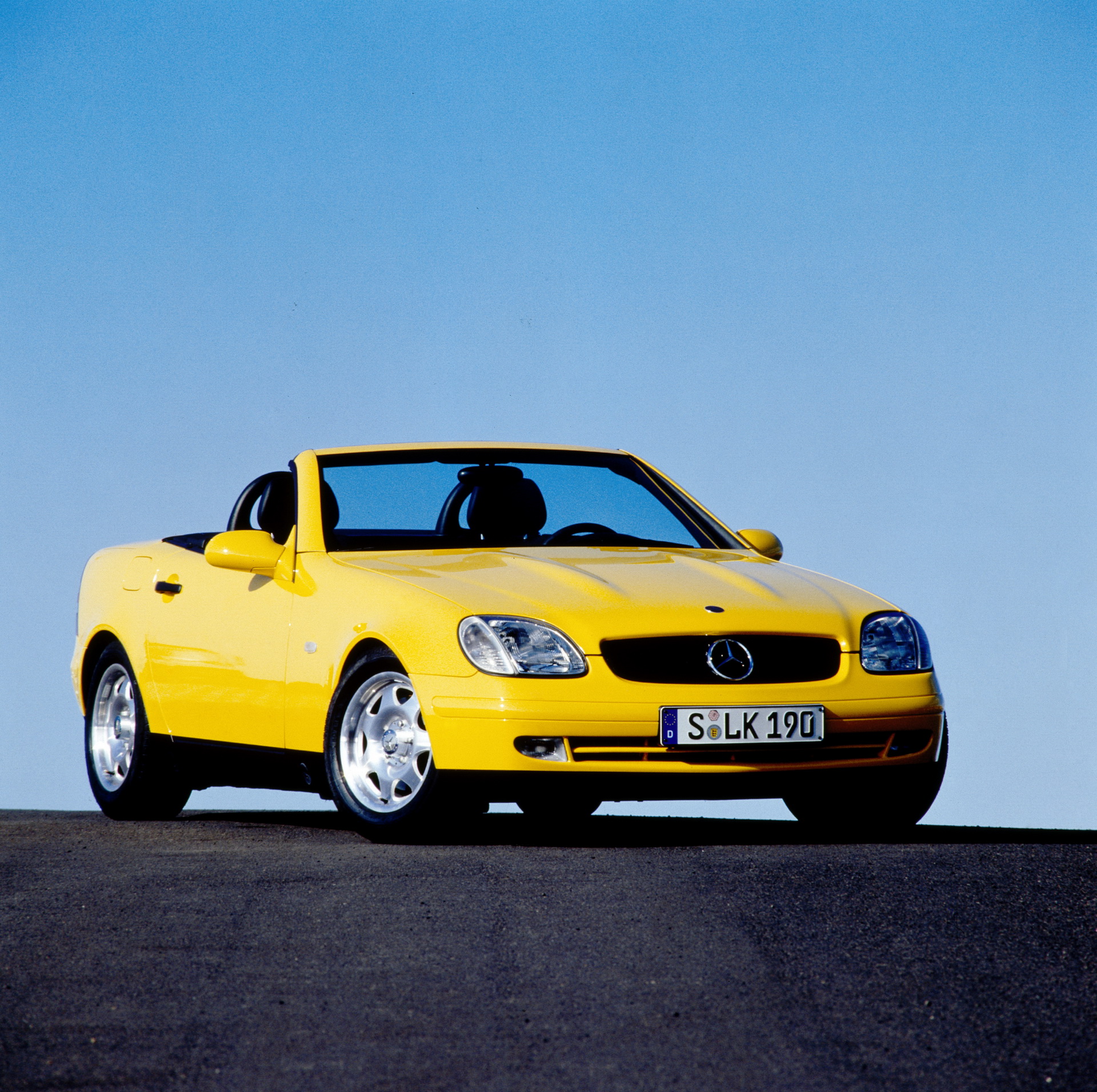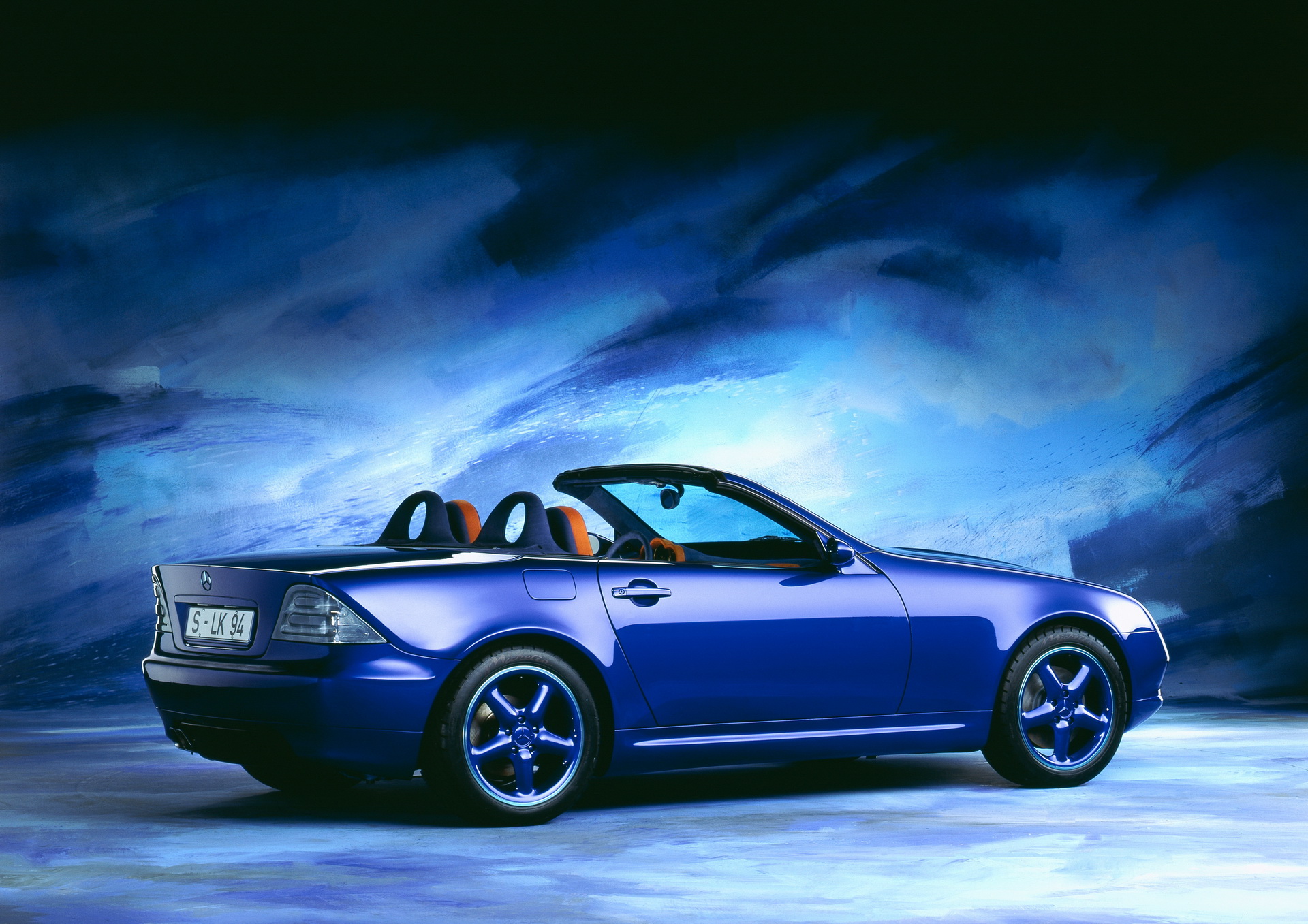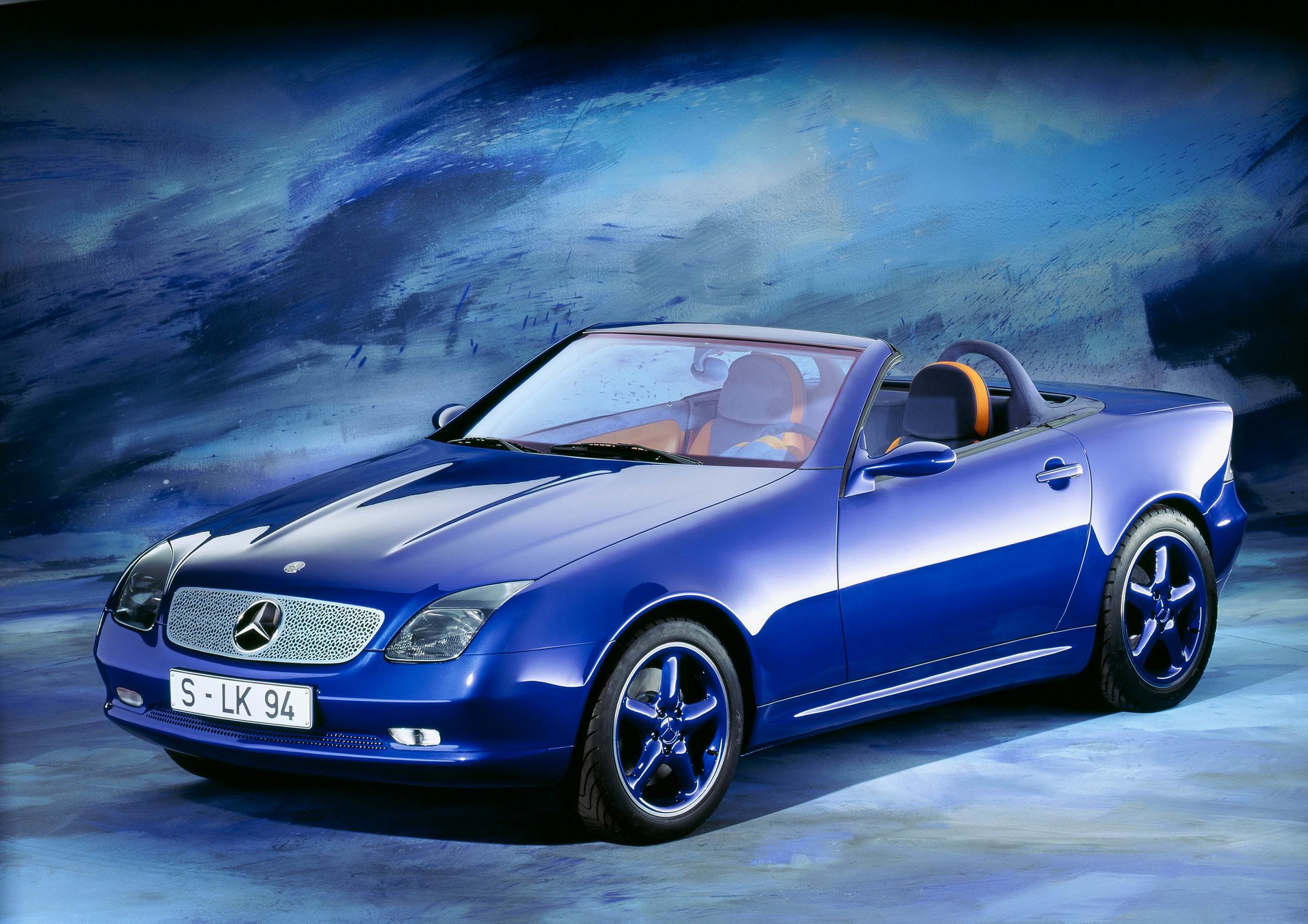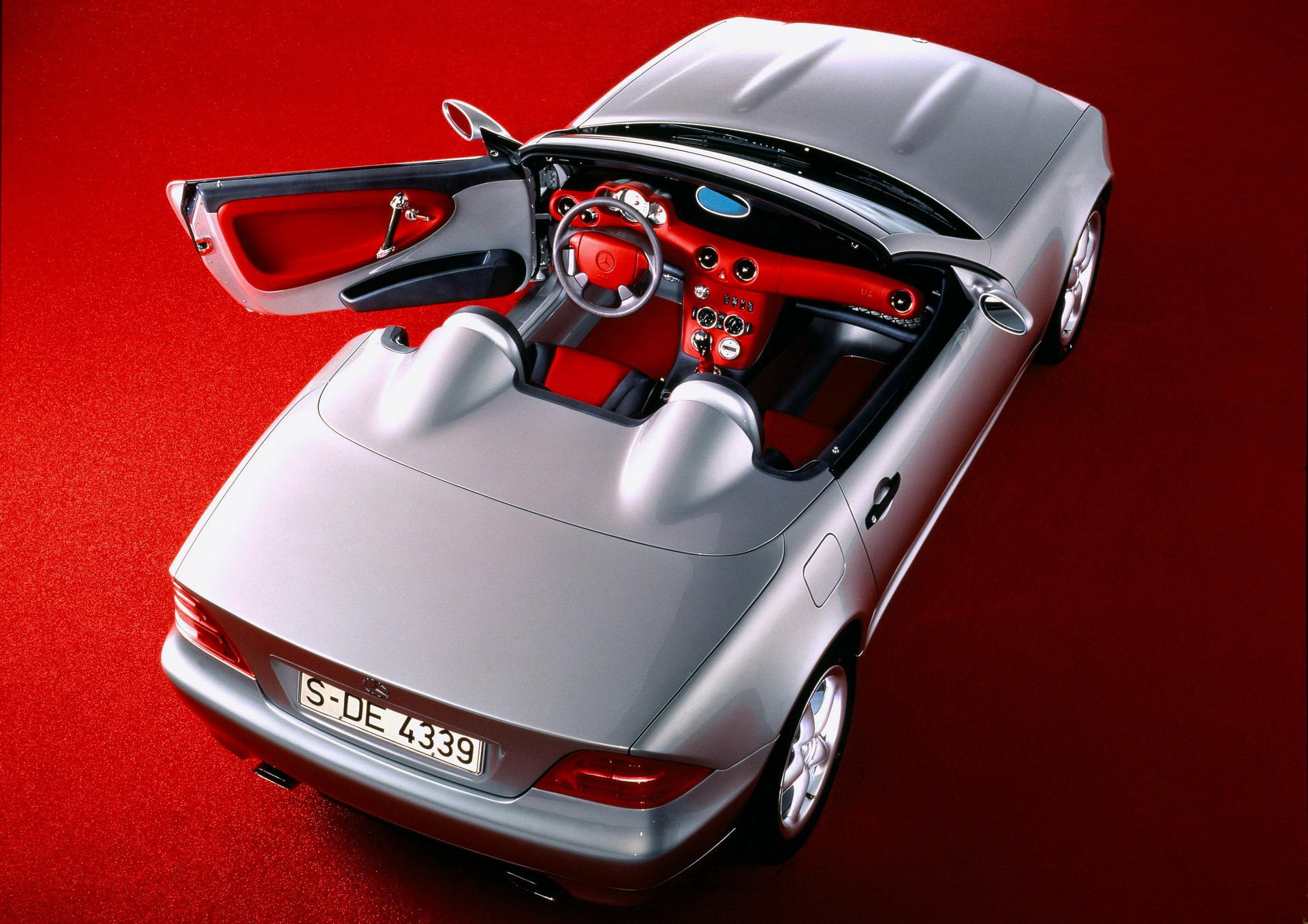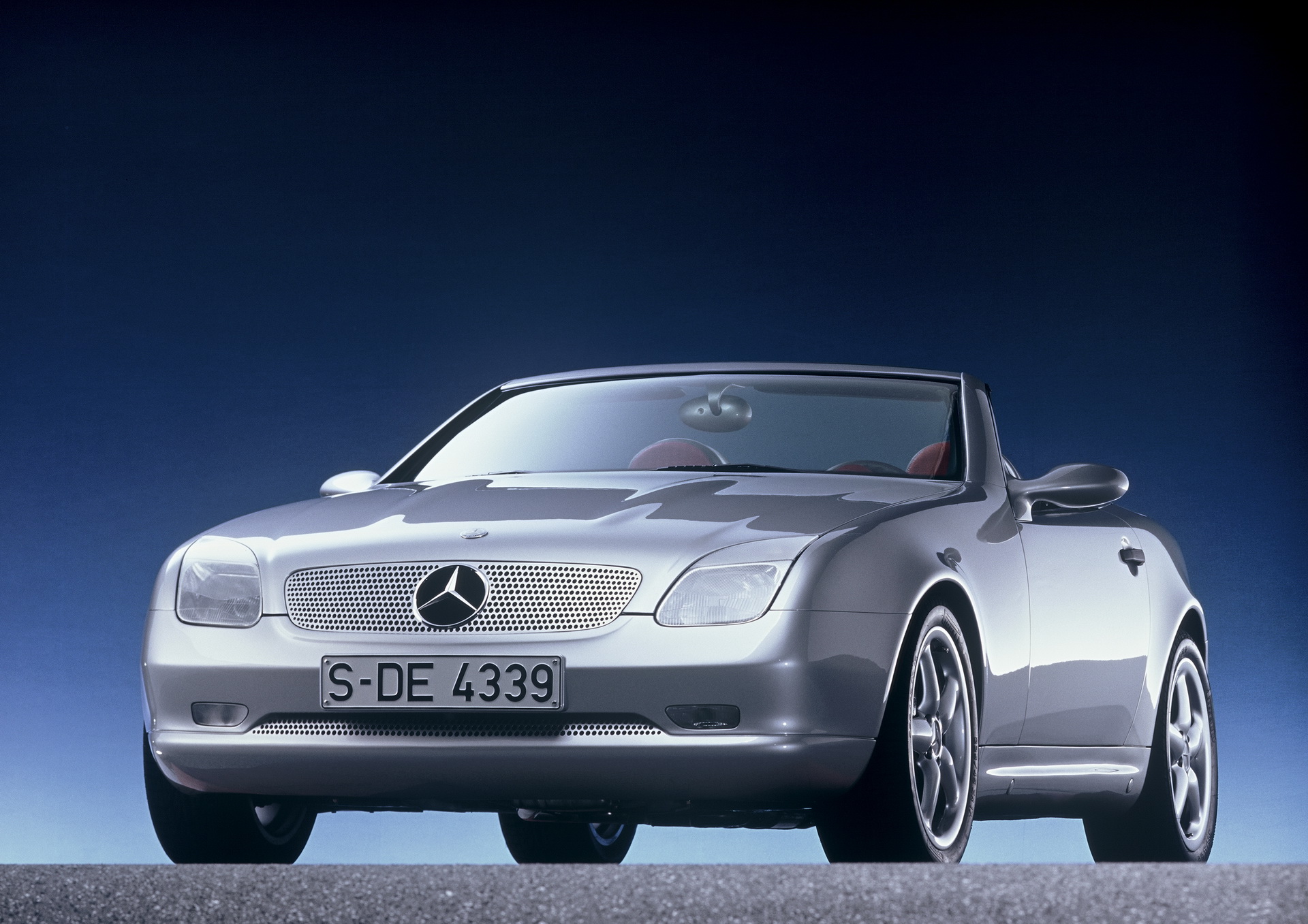With the new Mercedes SLC Final Edition, the German automaker says farewell to its smallest two-seater roadster in the range.
We contacted Mercedes about the future of the SLC and we received confirmation that there is no direct successor planned. This could very well mean that we’ll never see another small Mercedes roadster for the foreseeable future, given the current market trends.
Let’s face it, mainstream (or in this case less expensive?) convertible sports cars are dying if they’re not dead yet. All we’re left with is the Mazda MX-5, the new BMW Z4 (thank Toyota Supra for that) and the Audi TT Roadster.
So let’s take a look at the history of a Mercedes that will be known for its innovations and for introducing younger customers into the dealerships.
The one that started it all |1996 to 2004
The original Mercedes SLK was launched back in 1996, and immediately attracted huge interest with its innovative folding hard-top that kickstarted the whole trend. It was also the fist time Mercedes was offering a two-seater roadster that’s smaller than the SL.
The original SLK was advertised as the roadster “for all weathers”, with its Vario-roof operating through an electro-hydraulic system in just 25 seconds while still offering the class-leading safety levels of a true Mercedes, featuring a pair of fixed rollover bars behind the seats and a very stiff windscreen frame.
Customers were given a wide range of engines to choose from, starting from a 2.0-liter four-cylinder engine that produced between 134hp (136PS) and 190hp (193PS), the latter with a help of a supercharger. Later down the line, Mercedes added the SLK 320 in the range, fitted with a 3.2-liter V6 with 215hp (218PS) and of course the SLK 32 AMG that was powered by a supercharged V6 with 349hp (354PS).
The one that looked like a mini SLR | 2004 to 2011
The second generation of the SLK arrived in the spring of 2004, featuring a much more aggressive design that was inspired by the SLR McLaren. Based on an all-new chassis, the second-gen SLK offered a much sportier driving experience than its predecessor that was combined with more powerful engine options.
It was also the first car to introduce the “Airscarf” neck-level heating system that was integrated to the seats, keeping the driver and passenger warm with the roof down even in the middle of the winter.
The engine range started with a supercharged 1.8-liter four-cylinder in the SLK 200 with 160hp (163PS) and included a naturally aspirated 3.5-liter V6 in the SLK 350 with 268hp (272PS). For the first time in an SLK, you could get a V8 engine as well, if you went for the tire-slaying SLK 55 AMG with its 355hp (360PS).
The one that just looked weird | 2011 to 2016
Mercedes revealed the third generation SLK (which later morphed into the current SLC) in 2011. The new model was redesigned completely but it arguably lost some of its charm during the transition.
However, it introduced a new folding hard top that incorporated a glass top, called the ‘Magic Sky Control’. The new glass roof could switch from transparent to dark at the press of a button.
This was also the first SLK to become available with a diesel engine in Europe in the SLK 250 BlueEfficiency variant. Base models continued using the 1.8-liter four-cylinder petrol, with 181hp (184PS) or 201 (204PS). The SLK 350 grew more powerful to 302hp (306PS). The SLK 55 AMG remained the hot rod of the range, packing 5.5 liters of V8 goodness and 416hp (422PS) to play with.




